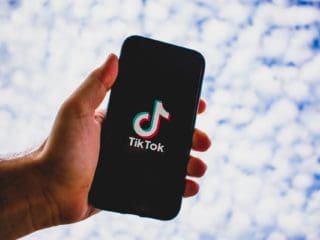Having worked in publishing, community management and social media and now specialising in communications, I’m well versed in nailing the correct tone voice to convey your message to your audience.
Over the past few months during COVID and BLM situations, there have been repeated articles that a brand’s tone of voice has to include empathy. But tone of voice is so much more than just being empathetic.
Without being genuine, human and authentic, a brand’s so called empathetic messages can come across as cold, unfeeling and false.
Let’s compare two engagement responses.
The first is by Honda in response to a user about its position on Diversity and Inclusion.
The response was personalised by the engagement team to some degree, rather than just saying hey read our statement. Honda certainly looks as though it is taking the diversity initiative seriously, by holding itself accountable and saying exactly what actions it is going to do.
In contrast, here’s a brand response from Toyota that answers the user question about an individual, however the use of the corporate language makes you feel that the legal or corporate comms team wrote this without it being personalised or adapted for social platforms.
The importance of tone of voice beyond being empathetic was reinforced when a Twitter survey found that just 7 per cent of 1,000 UK Twitter users want brands to return to their normal tone of voice, as published in Campaign recently.
During March at the height of the global pandemic, customers wanted informative content and engagement from its brand, whereas in June it is more about being caring and supportive.
The research demonstrates that brands have to be able to adapt their tone of voice to take into account cultural trends and situations, and not blindly carrying on with pushing its own agenda.
A brand’s tone of voice typically has four or five characteristics to it, but that doesn’t mean you have to include all characteristics when responding. For certain campaigns, or specific situations, it is about being able to change the emphasis to ensure it answers the user’s queries in the most effective and appropriate way. Engagement specialists, who reply on behalf of brands, must be able to tell the brand story using the correct brand values in a personalised, genuine and human way.
Here are some tips to help your engagement team hit the right balance with its tone of voice
- Always personalise every response – even if you are asked the same question over and over again
- Never cut and paste the prepared statement – adapt the response so it is appropriate for social media
- Put yourself in the customer’s place and think how they would feel after reading the response
- Read your response outloud – and double check it again before posting
- Take out the corporate jargon and use every day phrases and words
Now is the time for brands to re-evaluate their tone of voices to see whether it is valid in today’s climate of being more open and transparent with your customers. Spend the time downloading and analysing the data to truly understand the impact your tone of voice is having with your customers. Learn how your customers are talking to you – what phrases and common language are they using. Brands have to be able to respond back in a meaningful dialogue that sounds as though they have genuine interest in talking to their fans and followers.
This re-evaluation is the time to take out those horrible corporate phrases and wordy statements that add no value to telling your narrative. Brands are being held accountable for their history, actions and values and your engagement responses should reflect that. Talk to your customers using their language with every day words.
Tone of voice helps a brand to differentiate itself from its competitors and stand out from the crowd. Give your brand a unique and relevant personality to tell your brand narrative and make you relevant to your audience.






Leave a Reply